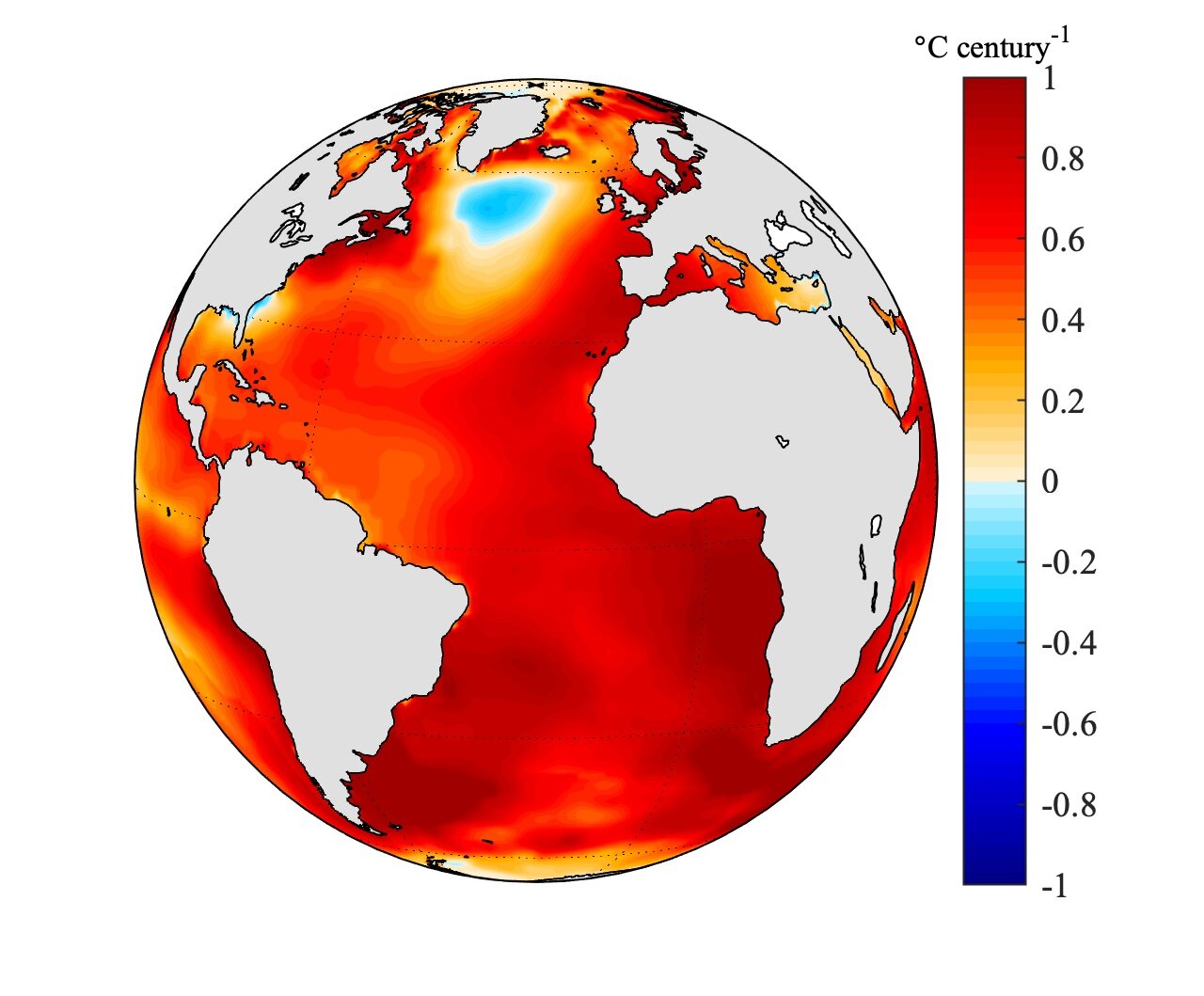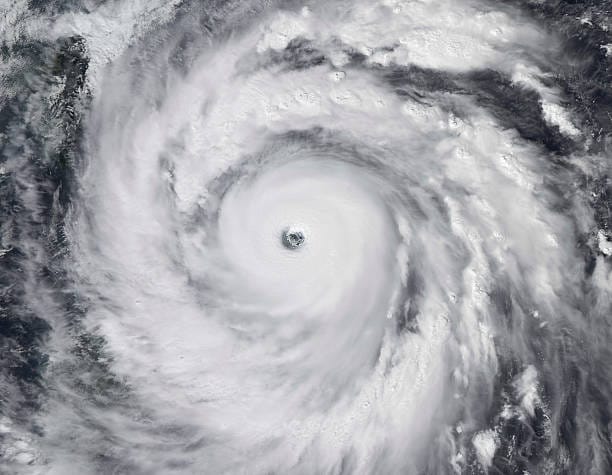For over a hundred years, an icy anomaly has lingered quietly in the North Atlantic—an enigmatic patch of ocean south of Greenland that defied the planet’s overall warming trend. Dubbed the “South Greenland cold spot,” it remained a riddle, a pocket of stubborn chill in a sea of rising temperatures. Why, scientists have asked, does this region buck the global trend?
Now, a new study may have finally cracked the case. Researchers at the University of California, Riverside, say the answer lies not in the sky above but in the currents below: the Atlantic Meridional Overturning Circulation, or AMOC, is slowing down. And that has global consequences.
The Ocean’s Hidden Heartbeat
The AMOC is not just any current. It’s a vast and powerful conveyor belt of ocean water that quietly regulates Earth’s climate. Warm, salty water from the tropics travels northward near the surface. As it reaches colder regions, it cools and sinks, sending cold water back southward at depth. This cycle moves heat across the planet and helps stabilize the climates of entire continents.
But the engine driving this cycle appears to be weakening.
“We found the most likely answer is a weakening AMOC,” said climate scientist Wei Liu, who led the study alongside doctoral student Kai-Yuan Li. “People have been asking why this cold spot exists—and now we know.”
The study, published in Communications Earth & Environment, used over a century’s worth of ocean temperature and salinity data to peer into the past. Though direct measurements of the AMOC only span the last two decades, these indirect clues—salinity and temperature—can trace the current’s strength like fingerprints left on the water.
When the AMOC slows, less warm, salty water reaches the North Atlantic. This leads to cooler and fresher surface waters—exactly what has been observed in the South Greenland region for more than a hundred years.
A Digital Climate Detective Story
Liu and Li’s research unfolded like a forensic investigation. By comparing real-world ocean data to nearly 100 different climate model simulations, they searched for a match. Most models couldn’t replicate the cold spot. Only those that included a weakened AMOC could recreate the distinct cooling trend in the North Atlantic.
“It’s a very robust correlation,” said Li. “If you look at the observations and compare them with all the simulations, only the weakened-AMOC scenario reproduces the cooling in this one region.”
Not only did those models show the temperature drop—they also mirrored the changes in salinity. Less salty water meant less heat being carried north. It was a perfect alignment of cause and effect.
A Climate Tug-of-War: Ocean vs. Atmosphere
The new findings also settle a long-standing scientific debate. Some recent models had pointed to atmospheric factors, such as aerosol pollution, as the primary cause of the cooling trend. They predicted that as air pollution declined, the AMOC would actually strengthen.
But those models couldn’t explain the data. They missed the cooling signature altogether.
“Our results show that only the models with a weakening AMOC get it right,” Liu said. “That means many of the recent models are too sensitive to aerosol changes, and less accurate for this region.”
By resolving this contradiction, the study refines climate forecasts, particularly for regions most affected by AMOC changes—like Europe and eastern North America.
Weather, Wildlife, and the Future of the North Atlantic
Why does this matter so much?
Because the AMOC is not just a slow-moving undersea current. It’s the invisible hand that shapes weather systems, controls storm paths, and even determines where marine species can live and thrive. A weaker AMOC means ripple effects throughout the Atlantic basin and beyond.
In Europe, it can mean colder winters and hotter, drier summers. The jet stream—a high-altitude air river that steers weather systems—may shift, altering rainfall patterns and agricultural conditions.
In the ocean, the temperature and salinity shifts could force marine life to migrate, disrupting ecosystems that rely on delicate balances. Fisheries from New England to Norway might see changing species distributions, affecting economies and food supplies.
And the cold spot itself? Far from being a local curiosity, it’s now seen as one of the most sensitive indicators of Earth’s changing climate system.
A Window into the Past—and the Future
One of the most powerful aspects of the study is its method. With just a century’s worth of temperature and salinity records—collected from ships, buoys, and satellites—scientists have reconstructed the story of one of Earth’s most important climate systems.
“We don’t have direct observations going back a century,” Li explained. “But the temperature and salinity data let us see the past clearly. This work shows the AMOC has been weakening for more than a century, and that trend is likely to continue if greenhouse gases keep rising.”
It’s a sobering thought. As polar ice melts and freshwater pours into the North Atlantic, it further dilutes the salty water that drives the AMOC’s sinking action. The current could weaken further—or in extreme scenarios, shut down altogether. That would have profound and possibly irreversible consequences for the global climate.
Learning to Read the Ocean’s Warnings
The South Greenland cold spot is more than a cold patch—it’s a message. For decades, it puzzled scientists. Now, it has become a crystal-clear signal from the deep: Earth’s climate engine is changing gears.
The new study doesn’t just offer answers—it offers a way forward. By improving our understanding of the AMOC through long-term data and better models, scientists can refine predictions and give policymakers the tools they need to prepare for a different future.
And for the rest of us? The lesson is that change doesn’t always roar. Sometimes it whispers, hidden in swirls of salt and cold, in currents far below the surface. And if we listen carefully, the ocean tells us where we’ve been—and where we might be headed.
Reference: Kai-Yuan Li et al, Weakened Atlantic Meridional Overturning Circulation causes the historical North Atlantic Warming Hole, Communications Earth & Environment (2025). DOI: 10.1038/s43247-025-02403-0






